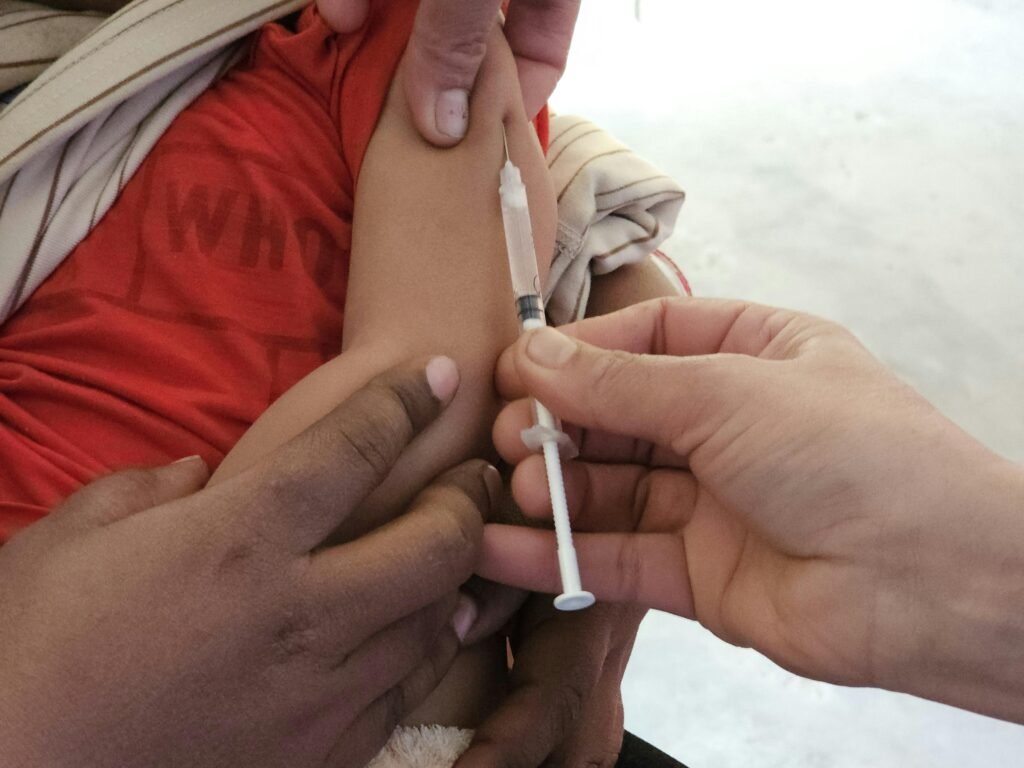Follow us and share.
Childhood Vaccinations: A Complete Guide to Protecting Children's Health
Discover the importance of childhood vaccinations, the recommended schedule, and the truth behind common myths. Protect your child's health with information based on scientific evidence.

The Importance of Vaccination in Childhood
Childhood vaccination is one of the most effective strategies for preventing serious diseases and reducing infant mortality. Thanks to vaccines, many previously fatal or debilitating diseases have been controlled or eradicated in various parts of the world. Ensuring that children receive the recommended vaccines on time not only protects their health but also contributes to herd immunity, protecting those who cannot be vaccinated for medical reasons.
Vaccines stimulate the immune system to generate defenses against specific diseases, preventing serious complications and outbreaks. It is essential that parents and caregivers are well informed about the importance of vaccination and the positive impact it has on public health.
Recommended Vaccines and Their Role in Disease Prevention
The childhood vaccination schedule includes a series of essential immunizations that protect against life-threatening diseases. Below are some of the most important vaccines and the diseases they prevent:
📌 BCG: Prevents tuberculosis, a disease that can affect the lungs and other organs.
📌 Hepatitis B: Protects against liver infection caused by the hepatitis B virus.
📌 DTP (Diphtheria, Tetanus and Pertussis): Essential to prevent serious diseases that can cause respiratory and neurological complications.
📌 Poliomyelitis: Prevents polio, a viral disease that can cause paralysis and permanent disability.
📌 Measles, Mumps, and Rubella (MMR): Protects against three highly contagious viral diseases that can have serious complications.
📌 Pneumococcus and Haemophilus influenzae type B: They prevent serious infections such as pneumonia, meningitis and sepsis.
📌 Rotavirus: Protects against severe gastroenteritis in young children, reducing dehydration and hospitalizations.
📌 Chickenpox: Prevents chickenpox, which can be serious in some cases, especially in infants and people with compromised immunity.
📌 Influenza: Annual vaccine that protects against different strains of the flu, reducing hospitalizations and complications.
📌 COVID-19 (based on local availability and recommendations): Protection against the SARS-CoV-2 virus and its variants.
World Health Organization (WHO) – Information on childhood vaccinations.
Vaccination Schedule by Age
The childhood vaccination schedule varies by country, but generally follows a structured schedule to ensure effective immunization in the first years of life. Below is a general schedule based on international recommendations:
📌 Newborn: BCG (Tuberculosis), Hepatitis B.
📌 2 months: DTP, Poliomyelitis, Pneumococcus, Haemophilus influenzae type B, Rotavirus.
📌 4 months: Second dose of DTP, Poliomyelitis, Pneumococcus, Haemophilus influenzae type B, Rotavirus.
📌 6 months: Third dose of DTP, Poliomyelitis, Pneumococcus, Haemophilus influenzae type B, Influenza (annual).
📌 12 months: Measles, Mumps, and Rubella (MMR), Chickenpox, Pneumococcus (booster).
📌 18 months: DTP and Polio booster.
📌 4-6 years: DTP, Polio, MMR, Chickenpox booster.
📌 Adolescence: Hepatitis B, Human Papillomavirus (HPV) in girls and boys, Meningococcus (according to local recommendation).
Following this schedule ensures effective protection against preventable diseases and strengthens the child's immune system throughout their development.
Centers for Disease Control and Prevention (CDC) – Childhood vaccination schedule.
Myths and Facts about Childhood Vaccines
There are many myths surrounding childhood vaccinations that can cause concerns among parents. Below, we clarify some of the most common misconceptions:
📌 Myth: "Vaccines cause autism."
- Reality: There is no scientific evidence to support this claim. Studies have shown no link between vaccines and autism.
📌 Myth: "Children can develop the disease from receiving the vaccine."
- Reality: Vaccines contain inactivated or attenuated versions of the virus or bacteria, which can generate immunity without causing disease.
📌 Myth: "There is no need to vaccinate if the disease is no longer common."
- Reality: Many diseases have declined thanks to vaccination, but if vaccination is stopped, they can re-emerge and cause outbreaks.
📌 Myth: "Vaccines contain dangerous toxic substances."
- Reality: The vaccine components are safe and used in minimal quantities approved by international health organizations.
American Academy of Pediatrics (AAP) – Information on vaccine safety.
Conclusion: Vaccination as a Pillar of Child Health
Childhood vaccination is a right and a responsibility of parents to ensure the health and well-being of their children. Adhering to the vaccination schedule and debunking myths surrounding vaccines is essential to preventing diseases and protecting future generations.
🌟 Advice: Always consult a pediatrician to ensure your child receives all necessary vaccinations at the right time. Vaccination is one of the most effective tools for preventing diseases and saving lives.


